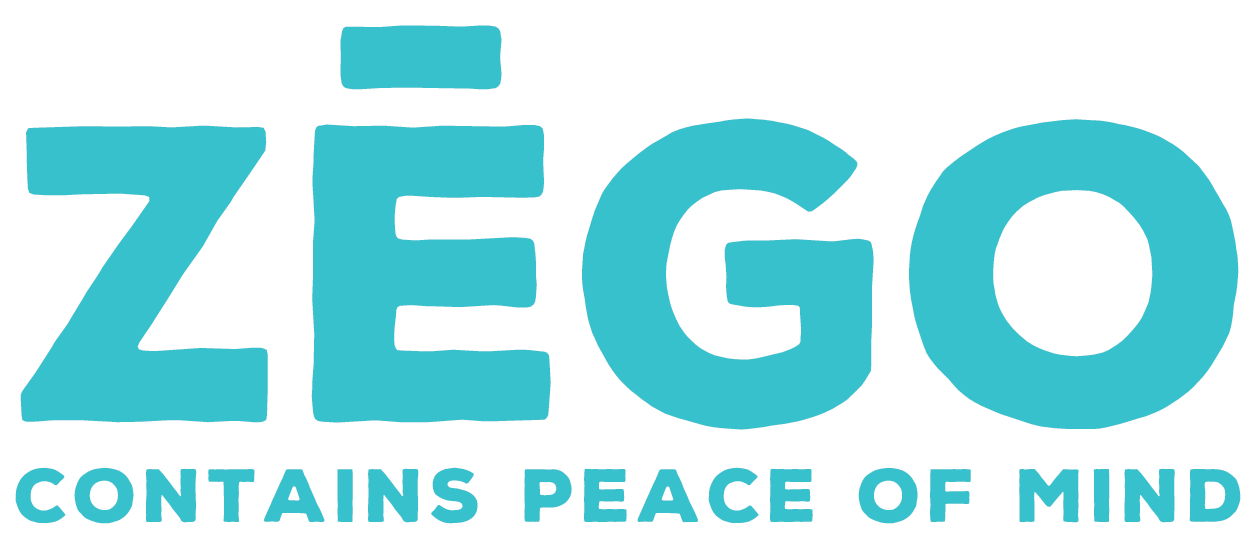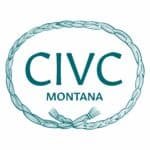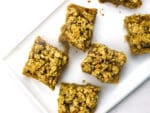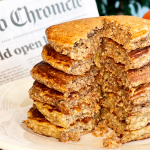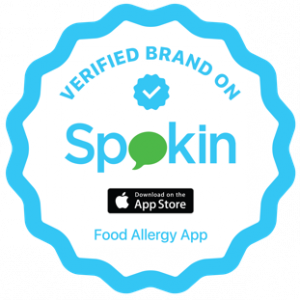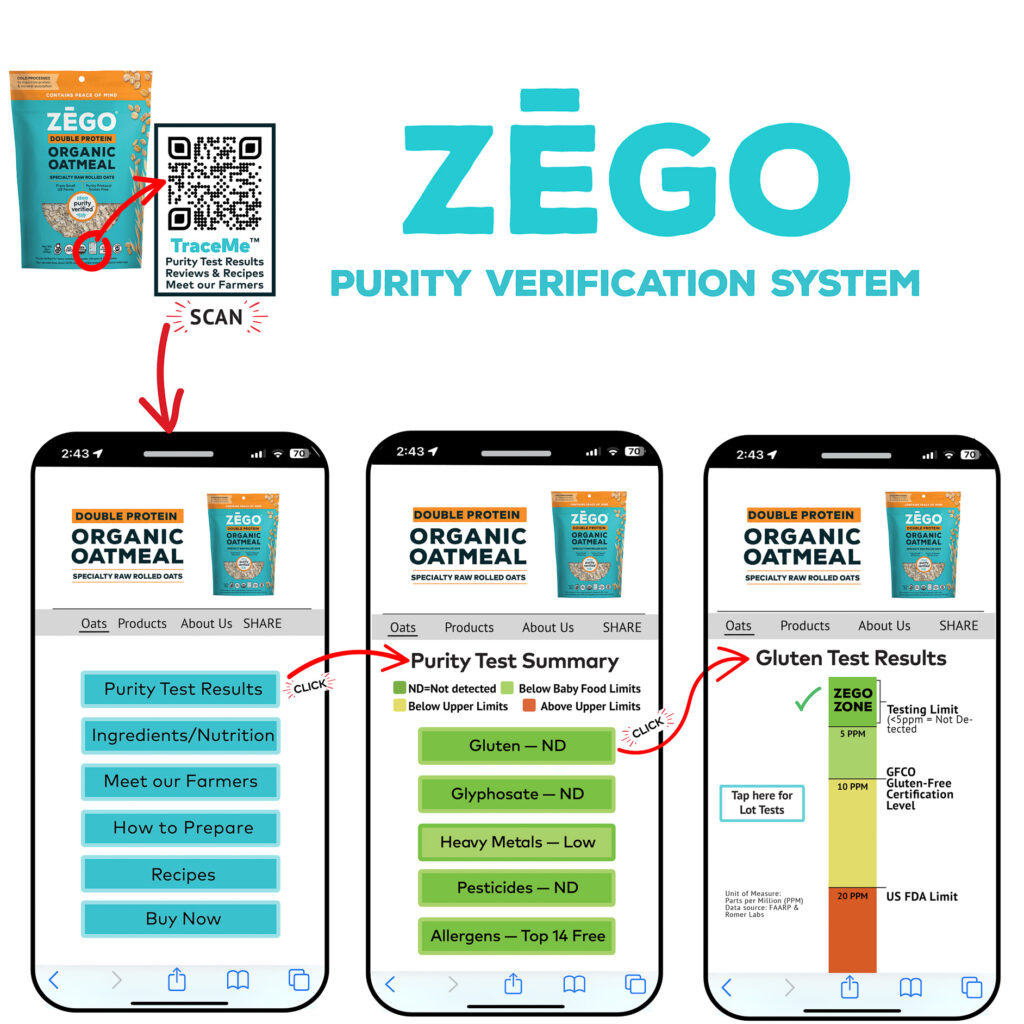
Scan your product below
to access its
Purity Verification Tests
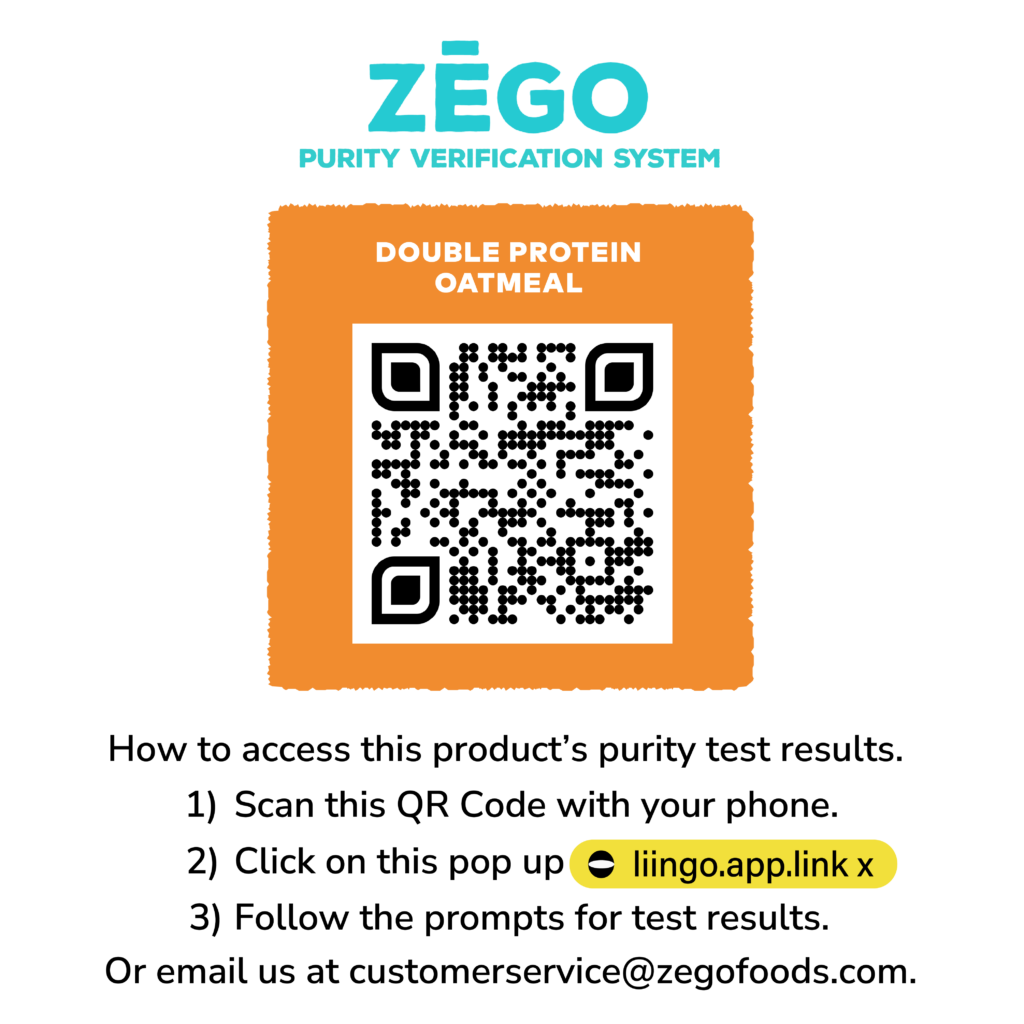
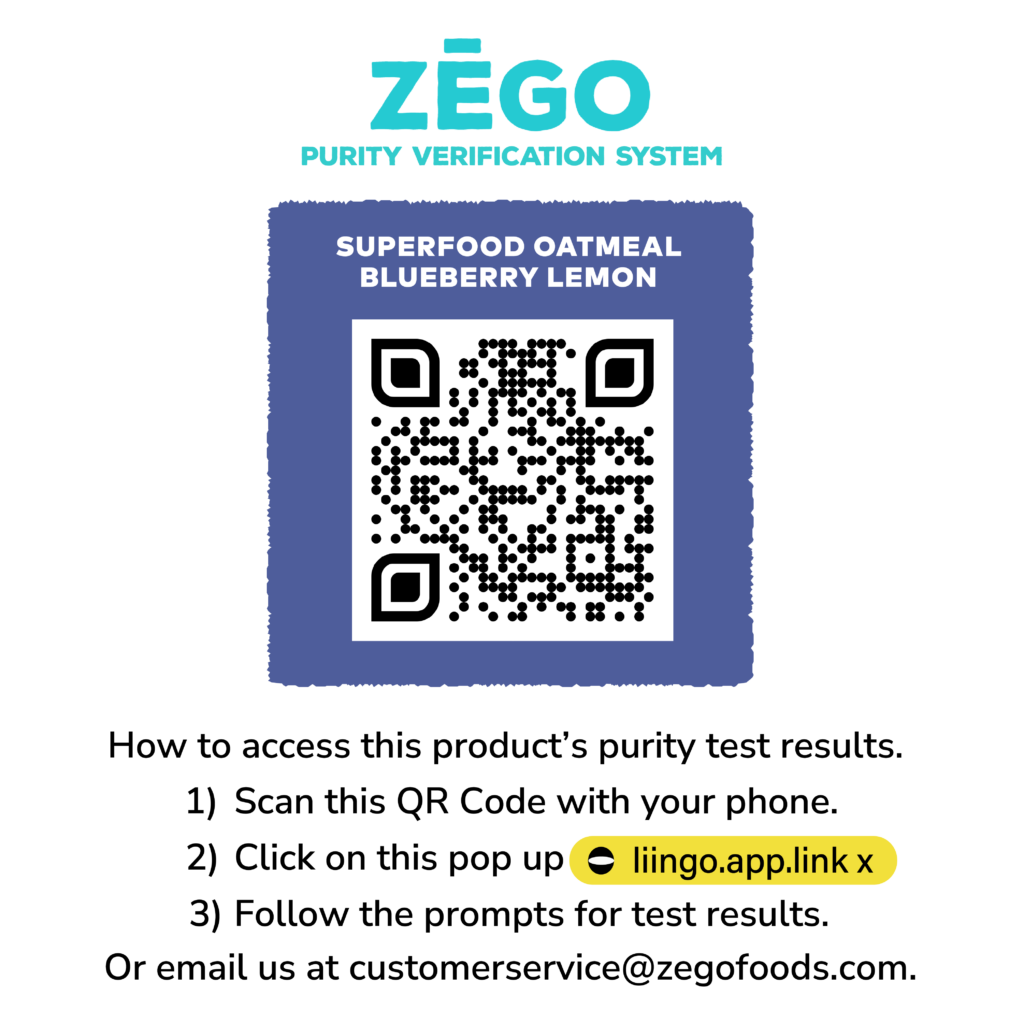
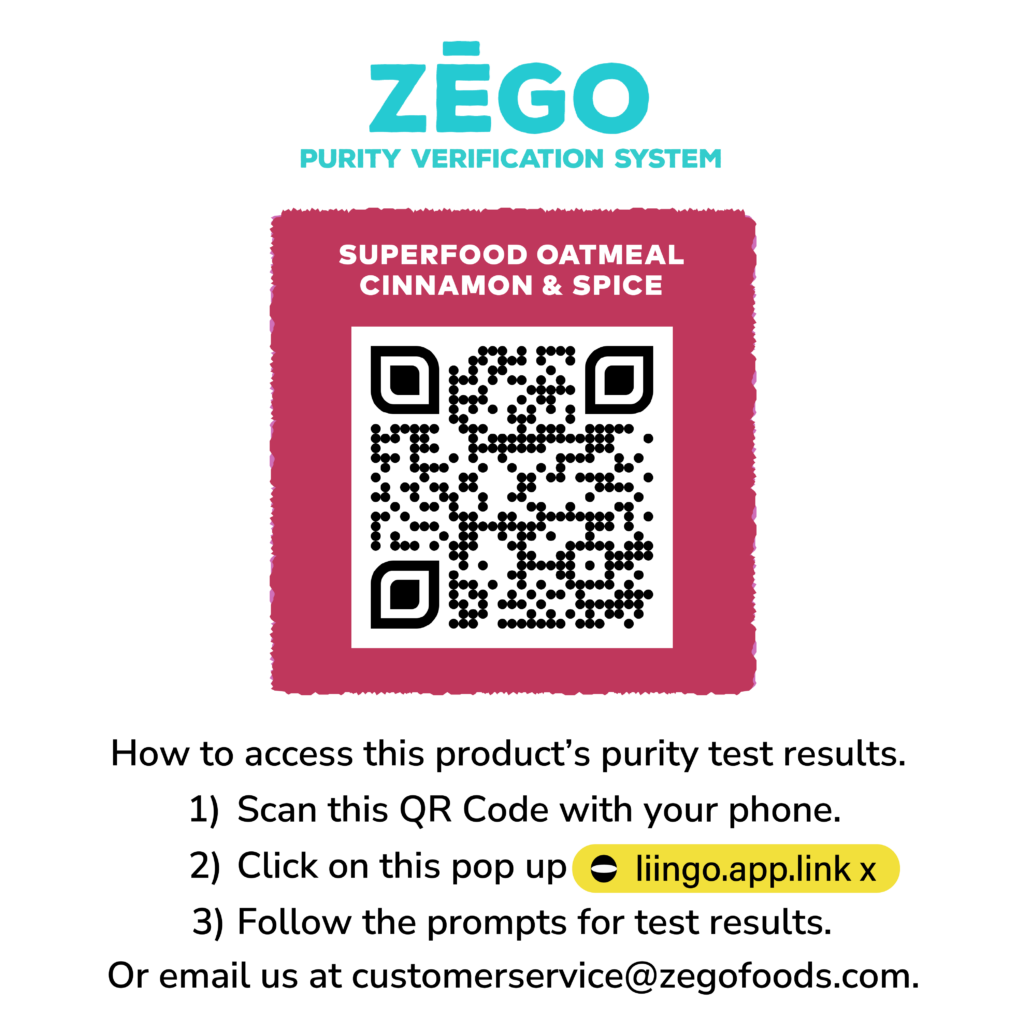
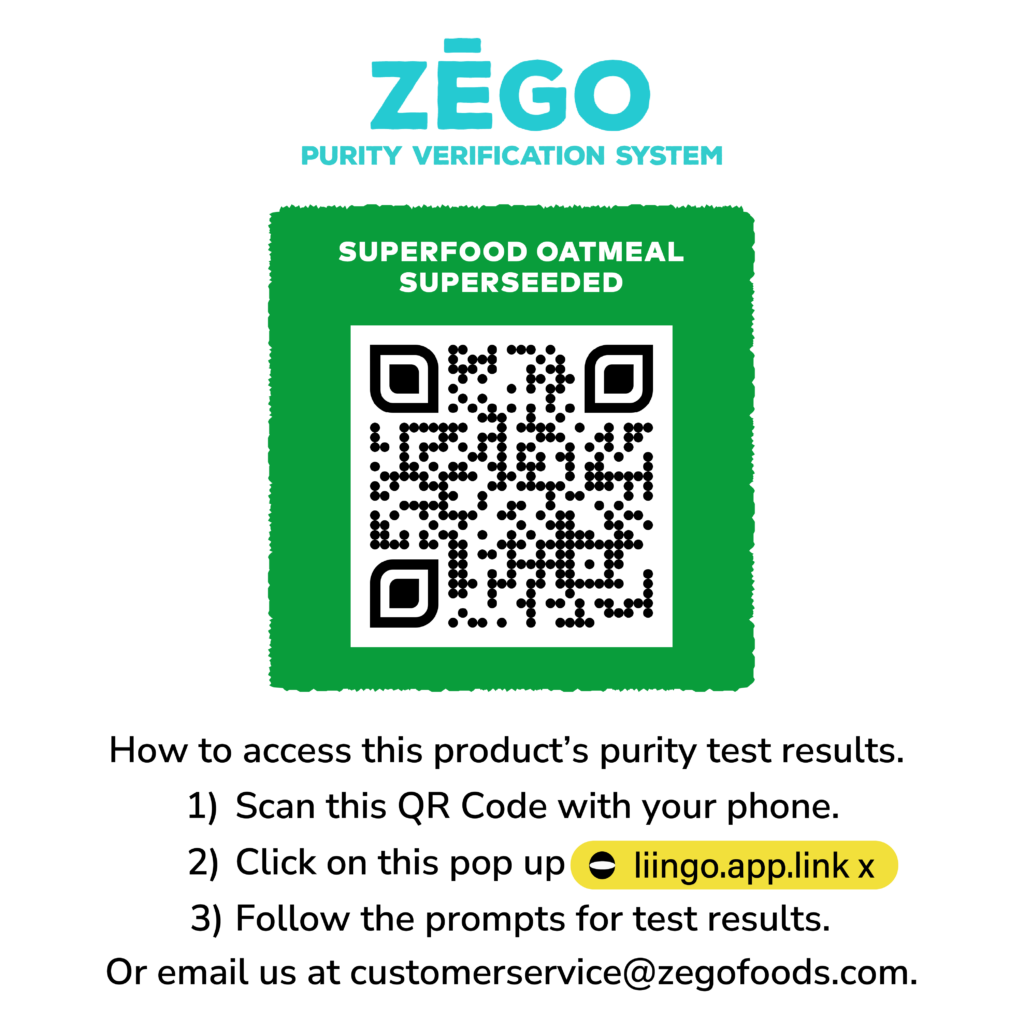
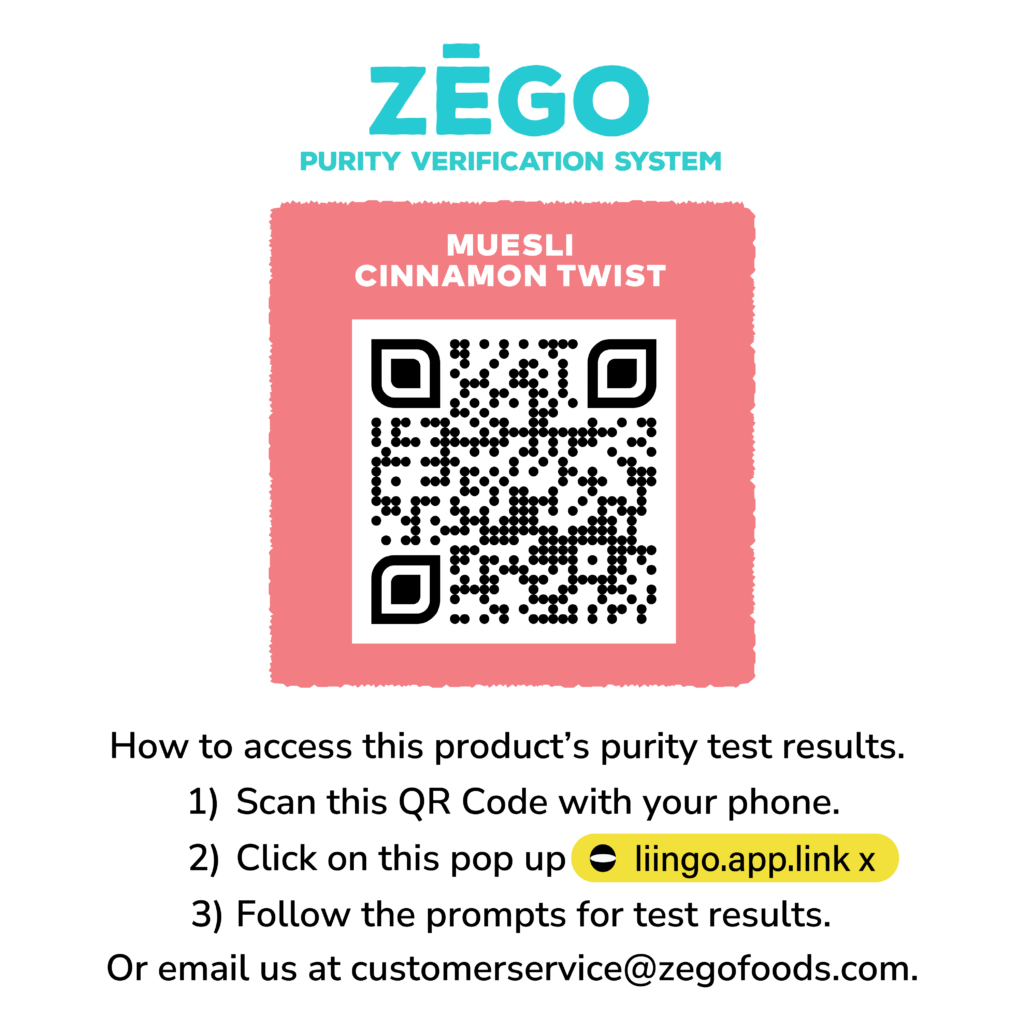
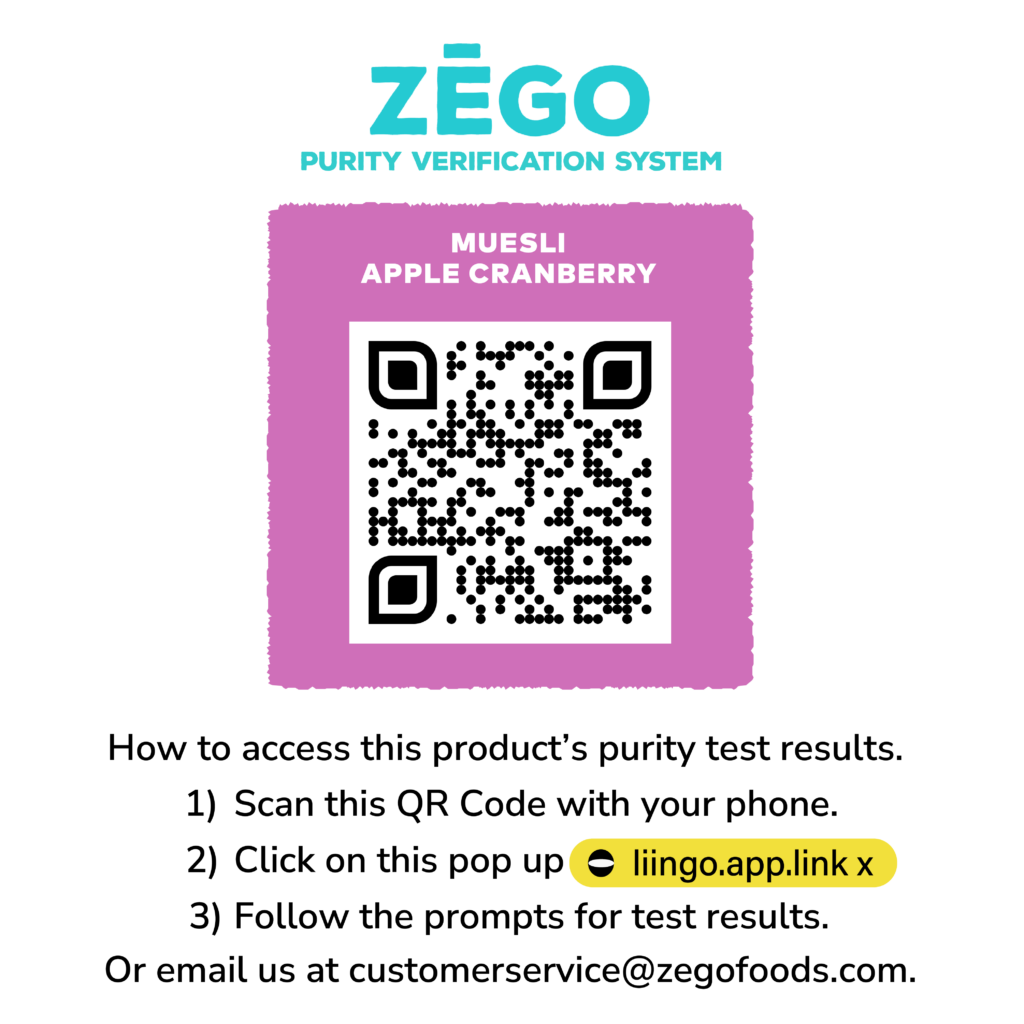
This page is under construction, so for Purity Verification reports on our Fruit Bars (being discontinued) and protein powder, please use these dropdown menus until we have time to add them as QR code images.
Protein Powder
Our Purity Process
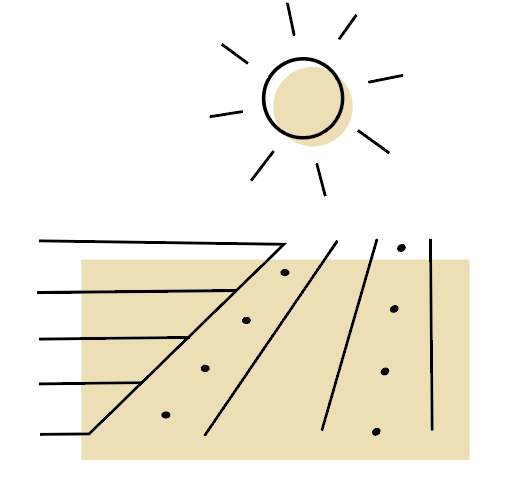
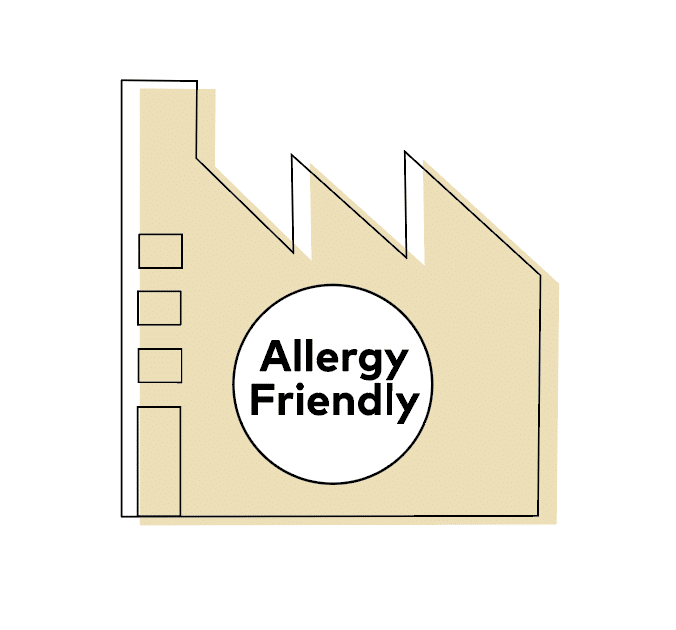
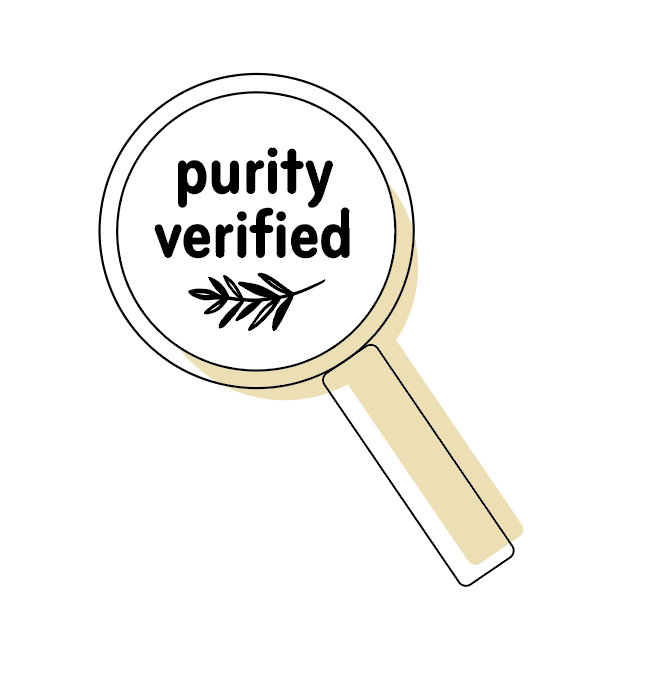

STEP 1: Dedicated Free From Facility
Our manufacturing facility is free of the top allergens and gluten-free. Our bagged products are made in a facility free of the top 14 allergens (including corn) and gluten free. Our bars are made in a facility that is free of the top 9 allergens and gluten-free.
STEP 2: Carefully Selected Ingredients
We carefully select our organic & non-GMO ingredients for purity safety. We buy from U.S. farmers whenever possible so we can keep a close eye on quality, support U.S. farms & minimize our carbon footprint.
STEP 3: Purity Verified by 3rd Party Lab
• allergens & gluten
• glyphosate & over 500 pesticides
• heavy metals (lead, cadmium, arsenic, mercury)
STEP 4: Posting Test Results
We post the results of each product’s testing on our website and link it to the QR code on each package. Or, if you do not have access to a smart phone, email us at customerservice@zegofoods.com and tell us which results you would like to see.
What is California’s Prop 65?
Proposition 65 requires businesses to provide warnings to Californians about significant exposures to chemicals that cause cancer, birth defects or other reproductive harm. These chemicals can be in the products that Californians purchase, in their homes or workplaces, or that are released into the environment. (OEHHA) There are about 1,000 chemicals, including heavy metals, on the list. The Prop 65 limits are typically the strictest standards of purity in the U.S. by a considerable amount.
Prop 65 standards and other international standards set by the U.S. FDA, European Union, and Taiwan for example cannot be compared directly because they are determined under difference assumptions and calculations. Prop 65 limits are applied to serving size. Limits are set under the assumption the consumer is exposed to the same amount of exposure daily to each toxin over their lifetime. Data from lab reports must undergo a calculation to determine if the food likely complies with Prop 65.
International and U.S. standards, however, take into account typical dietary patterns in that culture and provide a limit per food type. International and U.S. standards can be compared to each other and to a lab report.
It’s a bit confusing (to say the least) but summary is that Prop 65 cannot be directly compared to international toxin standards
What is VITAL?
The Allergen Bureau’s VITAL (Voluntary Incidental Trace Allergen Labelling) Program is a standardized allergen risk assessment process for the food industry. It is based on scientific clinical data on reaction levels to allergens. The assessment process establishes three “action levels” to guide companies in labeling if cross-contact is found. In our purity panel, we use a large circle in the green square to indicate that we have no measurable amount of that allergen in our product.
Why Do We Test for Glyphosate and 500+ Chemicals?
It’s a fact that most farming in the world uses chemicals of some sort to control for pests and weeds, even organic farms (some chemicals are approved for use in organic food). If you aren’t worried about chemicals and metals in your food, no worries — our food tastes great regardless!
But if you do want to minimize your exposure to them, we’ve got you covered. We buy only organic or non-GMO Verified ingredients from trusted suppliers and farms to minimize any pesticides and herbicides in our products. The most commonly used herbicide in the world is the controversial chemical glyphosate, found in Round Up and other herbicides. We think you should be able to decide if you want to eat food with chemical (or heavy metal) residue in it, so we test our products for it.
But we don’t stop there. We typically purchase our ingredients from the same groups of farms each year. Each harvest, we test for over 500 chemicals, pesticides and herbicides that can be found in food.
We use this information to pick the cleanest crops we can find for our products. You don’t need to take our word for it. because we link the lab test results to each product for you to see. Just scan the QR Code on any of our packages or email us to requiest.
Because glyphosate and other chemicals are present in measurable amounts in our rain, waterways and air, we cannot guarantee all our products will always have no measurable amount in them. But we promise to always seek the cleanest ingredients possible and to test regularly and publish the results for you to see.
What is Glyphosate?
Glyphosate was invented by Monsanto (now owned by Bayer) and is used in products like Round Up. It is the leading chemical herbicide used in the farming industry.
Is Glyphosate a Health Risk?
Some studies show a correlation between glyphosate exposure and certain cancers, endocrine disruption, and celiac-type symptoms. The International Research Agency on Cancer has identified it as a “probably carcinogenic to humans.”
Some countries ban or restrict the use of glyphosate altogether. The U.S. EPA has set a safety threshold for glyphosate exposure that is 127X higher than the threshold the California EPA is considering.
There are approximately 4000 court cases pending against Monsanto/Bayer where the plaintiff claims exposures to the chemical harmed their health.
Can You Avoid Glyphosate?
Companies and farms are not required to measure and report how much glyphosate residue (and other pesticides and metals) is on their food, like ZEGO does. We encourage you to email companies you buy from and ask them to start testing and reporting for glyphosate and allergens. And, some nonprofits have issued reports of glyphosate levels they have measured in food. If you want to minimize your exposure, there are actions you can take to consume only glyphosate-free foods.
- Choose organic when you can.
- Avoid GMO crops, which are more likely to have Roundup/glyphosate used on them, like conventional (not organic) soy, wheat, and corn.
- For produce, keep the “dirty dozen” list, which covers many chemicals including glyphosate, on your phone, and use it.
Why Do We Test for Chemicals?
We believe YOU have a right to know what is and isn’t in your food, even if we are not required to list it on the label, and even if the chemical has not been proven to cause health problems yet.
Though we cannot test for every chemical used in agriculture, we are currently testing for the 400 most common agricultural chemicals, pesticides, and herbicides. Testing for these chemicals can serve as a proxy for ensuring the ingredients we purchase truly are organic and/or non-GMO. We believe all companies should be testing periodically for chemicals and try to minimize it in their products.
You might be wondering if most of our products are organic, why do we test for these chemicals. The short answer is that even though something is organic, chemical contamination can occur despite the farm’s best efforts to keep their crops clean.
For example, a nearby, conventional farm could have some of their chemical residue runoff into the organic farm. In rare cases, chemicals can be used at processing facilities (after the product has left the farm). Fraud can also be the cause of chemicals found in organic products. And, we want to make sure our products are as clean as possible, which is why we take the extra step to test for these once per harvest.
How to Access the Test Results
We have a third party lab conduct these tests for us once per harvest, then we publish their results via a QR code on the packaging of every product. You can also review all the test results by scanning the QR code for each product located on the product packaging or the QR code images on each product page on our website or through the drop down manus at the top of this page. You can also email us at customerservice@zegofoods.com.
Our Plan for the Future
Our goal is to increase the transparency that all companies provide to their consumers, and show consumers they can have access to information like this. In doing so, we hope this will help clean up our food supply, reduce the chemicals used, and create a happier & healthier planet.
We know there are more than just these 500 chemicals used in farming including organic chemicals as well. We hope to expand our testing to cover more chemicals including organic chemicals, but we had to start somewhere, and we thought 500 was a pretty good starting point. After all, this is revolutionary – no other company is 3rd party testing and then publishing the results.
We hope you will join us, and ask more companies to start testing their products. Together, we can create a cleaner food supply.
How Does Purity Protocol Produce Cleaner Gluten-Free Oats?
Oat fields often have unintended wheat and other grain growing in them. For most gluten free oats, the farmer relies on optical machine sorting to remove wheat or other gluten-containing grains that may have gotten into the oat harvest. Machine sorting can leave a higher than desirable amount of gluten cross contact in the oats.
What is Purity Protocol?
Many Celiacs who react to other gluten-free oats find they can eat Purity Protocol oats. Purity Protocol is a set of stringent standards for oats that minimizes the chance of cross contact from gluten-containing grains like wheat, barley, rye, and triticale. The protocol covers seed selection, growing, harvesting, and transportation. This method costs twice as much for farmers as traditional gluten-free oat methods, which is why only the most thorough companies use purity protocol oats.
How does Purity Protocol Work? With Purity Protocol, the farmer uses strands of oats that grow significantly shorter than other undesired plants. Before the plants like wheat have started forming grains, they handpick the taller invading grain shoots from the field. This, in addition to careful seed selection, facility, and transportation standards produces an oat with minimal chance of gluten cross contact.
Facility Allergen and Gluten Facts
ALL BAGGED PRODUCTS
Oats/Protein/Muesli: No peanuts, no tree nuts, no soy, no dairy, no egg, no wheat, no fish/shellfish/mollusks, no lupin, no sesame, no mustard, no corn, no sulfites or gluten.
ALL BARS
No peanuts, no tree nuts, no dairy, no wheat, no fish/shellfish/mollusks, no sesame, no mustard or gluten. The facility may process corn-based ingredients. the facility recently changed its status, and now uses encapsulated soy and baked eggs on the same equipment but not on the same day and only after a thorough allergen clean out.
QUESTIONS?
Please don’t hesitate to reach out if you have other questions about our products at customerservice@zegofoods.com.
